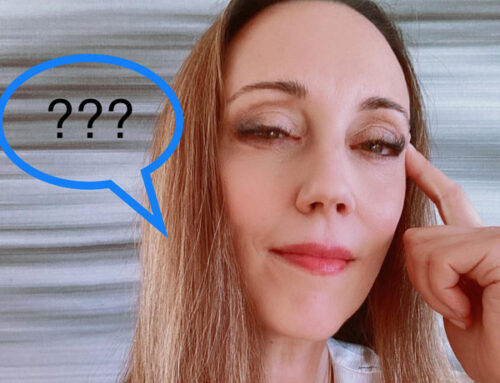If you can meet with Triumph and Disaster, and treat those two imposters just the same…
– Rudyard Kipling, If
Fail forward, fail fast and fail early.
These are frequently encountered expressions in my work as part of an innovation and transformation team.
If you swim in the circles of design sprint or agile methodologies, you will encounter failure daily as you develop and test products before you launch your minimal viable product. You will find yourself even repeating this cycle several times until you have your final product for release, or decide to abandon the project as unviable.
Henry Ford, the American industrialist noted that, “Failure is the only opportunity to begin again, this time more intelligently. There is no disgrace in honest failure; there is disgrace in fearing to fail.”
Failure is critical to the inventive process, the scientific process, to innovation, and to our personal growth. Yet why is it so hard and so impactful? Why do so many go to such great lengths to avoid the discomfiting emotions it brings?
Depending on your upbringing and life experiences, most of us aren’t encouraged to fail at anything. Yet there are innumerable examples of failures that have given rise to extraordinary success. One of the most prolific inventors of all time, Thomas Edison proclaimed, “I have gotten a lot of results! I know several thousand things that won’t work.”
From a design sprint perspective, direct feedback from clients informs next steps. This brings a team closer to getting things right in building a desirable product, or getting them to realize that the product won’t solve a problem (or something is being created that no one wants.) It is this ‘thin line’1 of understanding what might work, and abandoning what might not that can also be classified as a success.
As I reflect on the poet’s message, both success and failure are opportunities to learn- with their opposing tensions offering up new possibilities. In this sense, these ‘imposters’ become two sides of the same coin – each with valuable learning to propel ongoing metamorphosis. Taking risks to achieve your goals will mean you will encounter both success and failure in your journey. Both are key to growth, learning and shaping new patterns that define your future.
Feeling stuck by the physical and metaphorical lockdown of life at the height of the pandemic, I set myself a few goals. On a hastily scrawled post-it note on my bedside table, I challenged myself to ‘make one shift’ every day to bring me closer to achieving those goals. This personal call to action helped me feel like I was at least doing one thing differently every day to shift patterns in my life, when each day felt like an absurd repetition of the last.
I began to indulge my passion for writing. I set up this blog to test my hypothesis that change management methodologies used in organizations, can also be used to help individuals manage personal change. I then dropped my first podcast on applying change methodologies to shifting cognitive distortions. Anxious people can experience cognitive distortions. These are the ways people twist or distort information from their environment towards a bias of reinforcing negative thought patterns, leading to increased anxiety and difficulties in managing everyday stress. What followed was the publication of my first children’s book aimed at helping youth struggling with mental health. My goal was to raise funds for paediatric mental health initiatives at my local hospital from the royalties. During this time, my professional life saw some success as well. I was privileged to be part of an incredible team that received an honourable mention for a national award for improving healthcare systems.
Triumph! Right?
Well here’s the flipside. I have barely sold one hundred books, (mostly to wonderfully supportive friends and family). I have about four subscribers to my blog, and a grand total of sixteen people have listened to my podcast. I have only raised a few hundred dollars in my fundraising endeavors for my local hospital due miniscule book sales, and the high costs of print on-demand. (I’ll likely match my royalties when making my donation to spare me blushes when my first puny royalty cheque arrives!) As for our team, despite the accolades, I see the burnout setting in, as we struggle in a fourth pandemic wave, with severely acute and deconditioned patients escalating demand for urgent care.
Disaster! Boo…
Is this where the story ends?
Perspective has become a great friend.
Since this blog focuses on how change management tools can be applied to help individuals become unstuck their personal lives, I decided to have another look at Kotter’s Change Management Model. Given his theory is one of the most popular and adopted models globally2 due to its focus on employee responses to change, I decided to ‘test’ this against my personal experience.
The last four steps in Kotter’s eight-step model speak to maintaining momentum during organizational change. I see them as a great reminder for how to keep moving forward in the midst of triumph or disaster, as any change is an iterative and variable process. He writes:
- Get things moving – Get support, remove the roadblocks and collect feedback in a constructive way. Given the impact of failure, what can I learn from others that can support me to adjust my approach next time?
- Focus on short term goals – Don’t just focus on the end result. Set small goals and recognize small achievements during the process to boost morale. As I reflect on the cycles of success and failure this past year, incremental successes and changes have added up, bringing me a little closer to my larger goals.
- Incorporate change / learning – Reinforce and make change a part of the culture. Reward adaptation to change. What can I learn from success and failure to help me to adapt, adjust, and continue my growth? How will I honour and celebrate my smaller successes, and what changes will I sustain to continue my momentum?
- Don’t give up – Changes don’t happen overnight, and obstacles are unavoidable. I recognize the value of persistence in this process, while being flexible enough to reframe the horizon if necessary. I realize that triumph in one area, may yield disaster elsewhere. Based on this, I can evaluate where I will focus my energies given my new learning.
Triumph and disaster remind us to balance complacency and disappointment- but what if you viewed disaster (failure) as the genesis of possibility?
This brings me to another change tool that can inspire iterative and ongoing transformation in the midst of uncertainty: the adaptive action cycle3 from the Human Systems Dynamics Institute.
Start with What? What is your awareness of your responses to failure? What patterns are you seeing in terms of your response and emotions? What is this telling you? Are you dwelling on your problems or rehashing your mistakes to the point that you are demoralized, or even worse – paralyzed? What do you know to be certain or true in this moment (of triumph or disaster?) What patterns would you like to shift?
Move on to So What? What do your observations mean to you and are there things you’d like to change based on new opportunities? What do you want to be same and different in the future? Where do you see possibilities in making changes? You may not be able to attend to every issue or every goal at once (nor can you eat an elephant in one sitting) but ask yourself what is one thing I can try? What is one thing I can do right now to address this ‘failure’?
Finally, transition to Now What? Here is where you literally identify that one thing you’ll try based on what you’ve observed and learned. What patterns shifted based on your first attempts and success? What outcomes did you expect? What shifted? What stayed the same? What surprised you? What will you try now? What will you try again? What will you try differently?
Learn from whatever you perceive as ‘failure’, as it is really the foundation that springs you towards your next actions. This is the space where you recognize that you are capable of trying again as you build on your previous learning through each adaptive action cycle. It is in this process of working in the ambiguous lines between triumph and disaster, that you find endless possibilities.
The key is that you try something – for if you are too fearful to try it, you won’t grow from it.
What is one shift you’ll make towards facing a fear?
What is one shift you’ll make in embracing failure?
What is one shift you’ll make towards celebrating success?
What is one shift you’ll make in adjusting your perspective?
Share your journey with me @makeoneshift.com or www.makeoneshift.com
*Why the picture of me attempting to surf? I can’t think of a better metaphor for disaster and triumph than the sheer number of failures I had attempting to stay up on my board, compared with the thrill of managing to stay upright and surf for a few seconds!






It doesn’t sound like your amazing book is a failure when you consider most traditionally published books only sell 250-300 copies in the first year. It’s always about accumulated sales over years.
On the other hand, the fourth pandemic wave-that IS disheartening!
Just remember you have many admirers out here.
Thank you for the lovely encouragement. Perspective has certainly been a friend of mine this year and I look forward to plugging away and trying new things!